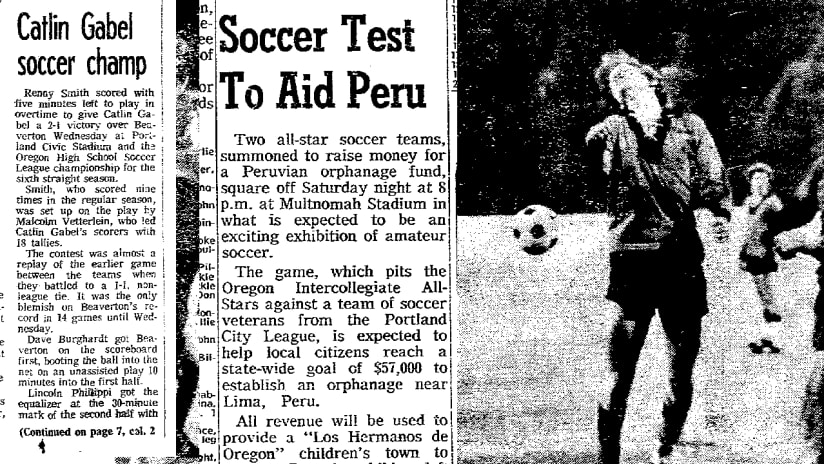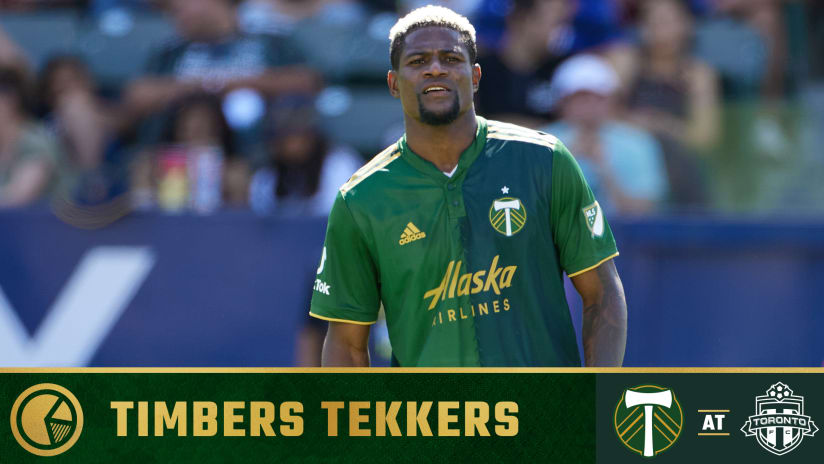Editor’s Note: Venerable Providence Park turned 90 years old this year. Designed by A.E. Doyle—a ubiquitous Portland architect for his era who designed the downtown Multnomah County Library, the Meier & Frank Building (now The Nines Hotel) and much of Reed College, among others—Multnomah Stadium, as it was first called, was built as part of the neighboring Multnomah Athletic Club in 1926.
Before becoming an American soccer mecca, the stadium hosted countless sports and non-sporting events as well as undergoing a few name changes adjusting from Multnomah Stadium to Civic Stadium to PGE Park to JELD-WEN Field and finally to the current Providence Park. From ski jumping to greyhound racing to major college football, the stadium has become a civic icon in the Rose City.
While soccer has emerged as its main event with the dawn of a new century, the beautiful game has made a home at the stadium throughout its 90-year history. Timbers.com will be running occasional pieces throughout the year on the different soccer eras at Providence Park. This second chapter takes a look at the quieter era thatran from the end of World War II into the mid-1970s. The majority of the information was gathered using and cross-referencing the Oregonian’s archives.
After the Portland Soccer League’s heyday at Multnomah Stadium in the 1920s and 30s, there was a major lull in the stadium’s soccer connections in the decades that followed. The Rose Festival, American football games, and a variety of other sporting exhibitions took place at the stadium while soccer grew quieter.
In 1956, the stadium found a tenant in the Portland Beavers baseball team of the Pacific Coast League. Multnomah Stadium was the largest minor league baseball park in the country. The Triple-A Beavers called the stadium home for 17 seasons, before moving to Spokane after the 1972 season. When the Beavers left, the independent Portland Mavericks called the stadium home.
However, during soccer’s quieter era at Multnomah Stadium, one of the most important moments occurred not on the field but in the voting booth. In 1966, the Multnomah Athletic Club, the original builders of the stadium, offered the city the chance to purchase the stadium. If the city did not buy it in 1966, the club would open the bidding up to others. The city opted to put the decision in the voters’ hands.
In the general election that November, with 55 percent of the vote, Portland voters gave the city the go-ahead to buy the stadium. This secured the stadium as a civic fixture and also ensured it as an eventual future home for the city’s soccer teams. Without the approval of city voters 50 years ago, the Portland Timbers and Portland Thorns FC and might not be playing at Providence Park today.
In 1970 and now known as Civic Stadium after the city’s purchase, in 1970 the stadium hosted a soccer benefit match much like it did in its first two decades of existence. On Oct. 24 of that year, squads featuring players from Oregon colleges and Portland’s city league faced off. The match raised money for an orphanage in Lima, Peru.
“Two all-star soccer teams, summoned to raise money for a Peruvian orphanage fund, square off Saturday night at 8 p.m. at [Civic Stadium] in what is expected to be an exciting exhibition of amateur soccer.”
–The Oregonian, 1970
The college all-stars that took the field that day featured players from the University of Oregon, Southern Oregon, Portland State University, Portland Community College, Oregon State University, Linfield College, Pacific University, and Reed College. The team the college stars took on were made up of players plucked from the leagues around the Portland metro area and coached by Bernie Rilatt. Rilatt would become the Director of Field Operations for the Timbers during NASL era and, many years later his son, Jim, would coach the Timbers U-23s PDL for seven seasons.
The early 70s also saw the stadium host both state high school soccer championships and state championships for the state’s amateur clubs. The powerhouse in that era was the Catlin Gabel School who won six straight boys state championships from 1968-1973. The 1972 State Championship at Civic Stadium saw 1,514 fans watch two future Timbers square off. Catlin Gabel’s Allen Schauffler and Forest Grove’s Grant Herreid both played for the NASL Timbers as replacement players in April 1979.
Though soccer during this period from World War II to the early 1970s may have been sparse in comparison to what came before, all that was about to change in a big way with the arrival of the North American Soccer League and the original Portland Timbers in 1975.













